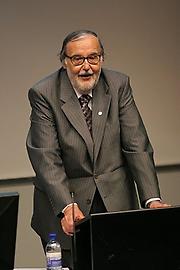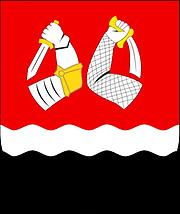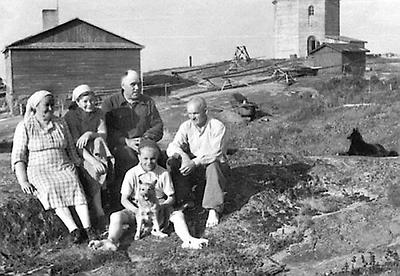Karelia, a Lost Province of Finland#

by Arto Salomaa Turku, Finland, 2014
Karelia Karelia , in Finnish Karjala, used to be one of the main provinces of Finland, located in Eastern Finland on the shores of the huge lake Laatokka, Ladoga Laatokka .
Being a border province, it has suffered numerous wars in the past. Nowadays, because of the unfortunate and unjust events of the Second World War, most of Karelia belongs to Russia. However, it is the hope of many Karelians, and also the hope of myself, that this state of affairs will improve in the future.
I am not a Karelian myself. I was born in Turku Turku, Finland . in Western Finland. But many people very close to me are Karelians, and somehow the happenings in Karelia have deeply influenced my life.
I want to tell about this. The story represents a personal view and experiences, historical facts are touched only superficially.
As regards history, there are similarities between Karelia and Moldova. I do not feel knowledgeable enough to go into any details.
A Summary of Karelian History
The first written mentions about Karelia date around 1100. According to
the legend, Greek monks Sergei and Herman brought the Orthodox Christianity
to Karelia and established the Valamo Monastery on an island in Lake Laatokka
around 1200. Catholic and later Protestant Christianity came from the West,
and the stronghold Viipuri
Vipuri, Russia
was founded around 1250. Viipuri later became the
second largest city in Finland.
However, the destiny has not been able to affect the mood of Karelians. They are known as the happiest and the most optimistic among the people in different provinces of Finland. Viipuri used to be called as a happy and merry city.
The Tzar Peter the Great had started in 1703 to build a fortress, Peter-Paul, in the middle of Ingernland, at the root of the Karelian Istmus. The isthmus separates Lake Laatokka from the Gulf on Finland. That fortress on Hare Island was the start St. Petersburg St.Petersburg,Russia , which in 1712 was declared the capital of Russia. This purposeful Russian expansion produced a dominating metropolis situated very close to Finland. Its location caused later considerable suffering to Karelia and Finland in general, for "security reasons". The subsequent developments, the details of which are of no significance to this story, lead to the Russian attack to Finland in 1939, and to the famous WINTER WAR. This is also where I can join history with my personal memories and experiences. Unfortunately, this is also where Karelia became the lost Province of Finland.
Prologue: My Grandfather and Seiskari Island
Still, for me Seiskari has always been the most romantic spot on earth. In one of the most popular songs in my youth Seiskari was described as a place without shelters against winds but still the Seiskari girl was the most beautiful among all girls.
The most conspicuous buildings in Seiskari were the lighthouse and the church, built in 1770. The church vanished during the Soviet time. My grandfather Hjalmar Prins was the priest in Seiskari, at the beginning of the last century. His life was quite extraordinary.
He was found as a newborn baby on the steps of the house of a Finish sergeant who had fought in the Russo-Turkish War in 1877-78. It was found out later that he was the son of a foreign officer in the Russian army, either Polish or Romanian. When I tried to follow the Romanian alternative, Gheorghe Paun arranged for me a visit to the Military Museum in Bucharest, where I learned numerous facts about the movements of the troops. Of course, no details about persons could be found out.
My grandfather died already twelve years before I was born. But I heard much about him and also about Seiskari from my mother. One could go to the mainland by boat in the summer. In the winter the sea was frozen, and one could go over the ice, perhaps using also a horse. But during the spring and fall no transportation was possible, there were also no means of communication. The island with some 500 inhabitants had no doctor, and so medical help was provided only by the priest and perhaps by a midwife. There was not much land for agriculture. But people has cattle and pigs. There was handicraft, and fishing was very good.The Winter War
In the negotiations between the foreign ministers von Ribbentrop of Germany
and Molotov of Soviet Union in August 1939, the Eastern Europe was secretly
divided into spheres of interest between the two countries. Thereby Eastern
Poland, the Baltic countries, as well as Finland, fell into the Russian sphere
of interest where Soviet Union could make any demands whatsoever. Poland
was very soon occupied, and territorial demands were made to Finland and the
Baltic countries. The latter conceded and very soon learned the truth of the
saying that if you give your ¯nger to the devil, you will lose your whole hand.
The Baltic countries became Soviet republics behind the iron curtain, until the collapse of the Soviet Union. Had the same happened to Finland, my life would have been very different. A career in science, let alone an international career, would have been very difficult for me.
But Finland did not concede to the demands. On November 30, 1939, Russia attacked Finland on the Karelian Isthmus (between Laatokka and the Gulf of Finland), on fronts more to the north, and by bombing the cities of Finland. In Russia they had formed a puppet government, so-called Terijoki-government, consisting of emigrated Finnish communists. This "true government of Finland" had asked for "help". Of course nobody in the West bought this argument, and in December Soviet Union was expelled from the League of Nations.
Compared with Finland, Russia's military power was huge. At the beginning they had three soldiers against one Finnish soldier, but the supply of enforce- ments was unlimited. The number of Russian airplanes was ten-fold, compared with Finland, and the number of Russian tanks was hundred-fold. It was no wonder that the Soviet leaders thought they were facing an easy march, at most two weeks, to Helsinki. Shostakovitch was ordered to compose music based on Finnish folk tunes, to be played in Helsinki during the festival occasions follow- ing the peace agreement. (This music could be heard in Finland still some ten years ago. In my opinion, it was quite good.)
But the reality turned out to be different. During the 105 days of the Winter War Russians made practically no progress on the fronts. On the contrary, they lost several divisions and huge amounts of material. Details can be found elsewhere. There are very few examples in history, and certainly no other in the Second World War, where a small nation has been able to resist the attack of a nation huge in comparison. There has been much speculation concerning the reasons. Severe winter and the high morale of the Finnish army are often mentioned in this context.
At the time of the winter war, practically no other war activity was going on elsewhere. Therefore, Finland was in the focus of the international press in a way it has never been before or after. Many foreign volunteers fought along the Finns but no really signifficant help was given to Finland by any other country. Finland ran out of supplies and was forced to agree on harsh terms of armistice, where Karelia and some other territories were lost.
The peace lasted about a year. When Germany attacked Russia, Finnish cities were bombed by the Russians, and Finland joined the war again and was able to win back Karelia, as well as win some additional territories. The wiseness of the latter move has been questioned later on because, at the end, Finland was on the losing side. Although Finland was never occupied, the peace conditions were harsh. Finland lost Karelia and some other (much smaller) territories. Finland also had to pay war reparation payments to Russia. The latter lasted till 1951 but had the positive effect that Finland changed from a mainly agricultural society to an industrial one.
I was five years old in the fall 1939. I remember people talking very nervously. A particular scene is very clear in my mind. I was in a shop with my mother. A cop came in and announced that the rationing of coffee begins immediately. He spoke very loudly. To me he sounded like he was reciting a poem:
Nyt ei saa sitte kahvia
ennenku maanantaina kortilla!
(Coffee can be bought no more
except for coupons, in this store!)
On November 30 I was playing when loud alarms sounded in Turku. People were screaming. An old maid was telling many times that the Heavenly Father will help. She panicked and left the gas stove on, without lighting it. Yet during the five war years nobody in my family was killed or wounded. My brother was on the front until 1944, my mother also quite much. My old father also had many duties away from home but my sister stayed with me. During the winter war we were in a summer cottage in the country. It was freezingly cold, and I had a severe ear infection most of the time. Perhaps that is the reason that I now have, unlike many other men of my age, an excellent hearing.
Puolala Park in Turku, where my home was located, was hit by a bomb twice. Both times all our windows were broken but we found some temporary coverage. Rationing continued until about 1951-52. The first ship with a coffee load, Herakles, came to Turku in 1947. People from far away came to see it. Every adult in the country was allowed to buy 125 grams of coffee. Although the whole time there was a severe shortage of food and clothing, I still think people were in those days much more satisfied than what they are now.
A resettlement unique of its kind
From the lost territories some 430 thousand people had to be resettled in the
remaining part of Finland, by a population of some 3.5 million. This was done
in a very organized fashion, I think unique in history. A special ministry and
special legislation were created for this purpose. Consequently, there were no
refugee camps. Everybody had reasonable conditions. People who were living in
the same area in Karelia were settled close to each other. Train transportation
was provided. Although sometimes inconvenient and lengthy, it worked. The
soldiers evacuated the monks and icons from the Valamo Monastery.
Of course, all this called for sacrifices from the people living in the remaining parts of Finland. Thirty hectars of land could be confiscated from a farmer. In the cities there was a very strict control of housing: no empty rooms were allowed. I am not saying that everybody was making the sacrifices needed willingly. But there was no mutiny or armed resistance.
Gradually things improved and, quite amazingly, Finland was able to arrange The Olympic Games already in 1952. During my lifetime Finland has developed enormously. A couple of years ago Finland was classiffied by Newsweek as "the best country in the world to be born in".
In the late 40's many of my friends and schoolmates were of Karelian origin. At the beginning there were many jokes and misunderstandings because their dialect was very different from the Turku dialect. But in the long run you did not any more pay attention to matters like this.
A very important event in my life was when, after a lecture by the history professor in 1953, a met a girl who to me looked like the Seiskari girl of the song. She became my wife in 1959. She was not from Seiskari but from Johannes on the Karelian Istmus. Karelians love their family and relatives and keep close contact with each of them. I have got many friends from the relatives of my wife. I have also learned, at least to some extent, the Karelian dialect. People from Johannes have many Johannes-related activities. A monthly newspaper has been published already for some sixty years. Books from many villages of Johannes have been published. In such a book every house on the village, as well as its inhabitants, are described. After the collapse of the Soviet Union, it has been possible for the Karelians to visit their old home sites. My wife does this every year, although only some stones are left of her home. I have been there twice. The scenery is quite depressing.
Every summer there is a two-day Johannes festival. The festival has been a kind of a bridge to the past. The lost home district with its memories, the experiences of the evacuation journey, the Karelian culture and the work of earlier generations have all added to the festival in a variety of ways during the decades. However, the purpose of the festival is not only to look back but also to create a connection between people from Johannes now scattered throughout Finland, as well as with their children and grandchildren. The festival also provides a possibility to meet relatives and friends.
The memories from the home district gain new enthusiasm when shared with others. The bridge also reaches for the future. In the festival people join together to speculate on the future in a very positive sense, without any thoughts of revenge. Geographically and historically, earlier also culturally, this region belongs to Finland.


